The Ministry/Project signed an MoU with the Ministry of Internal Affairs such that all the foreigners into the country to work on the Project must seek a ‘no-objection’ from the Project. This will ensure that the personnel entering the country are those strictly required for SGR construction and in compliance with the local content approved guidelines.
Progress
The Government of Uganda continues to make significant progress in the development of Standard Gauge Railway in the country.
MoU with Ministry of Internal Affairs
Engineers Registration Board (ERB)
The Ministry/Project has signed an MoU with the ERB to regularize the qualifications of the engineers, technicians and technologists that will be coming to work on the Project. All will have to be certified by ERB
Loan Application
The Ministry prepared all the loan application support documents which include Certificate of ESIA, Bankable Feasibility Study, Contract Documents and all other reference documents to support the loan application.
Project Document
Using in-house capacity, a Project Document was prepared and approved by the Minister, detailing the development of 1724 km of railway line.
The Project prepared the Strategic Plan using in-house capacity, detailing the activities required for the development of the railway from Malaba to Kampala and the light rail.
Land Acquisition Strategy
• Strategy for Land Acquisition was prepared and approved by the Chief Government Valuer.
• The railway corridor gazetted as required by land acquisition Act.
• Sensitization and socio-economic assessment of the affected persons were carried out.
• Memoranda of Understanding signed with all the affected districts.
• Permission for Right of Way was obtained from NFA for gazetted forests for 8.9KM of land in National gazzetted forests. Certificate for railway corridor worth 53km in wetlands was obtained from NEMA.
• Todate 100km of 60m corridor have been acquired and compensated for and affected persons paved way for construction. Resettlement Action Plan for 82% of the route has been done and still ongoing. 33 schools and 11 factories will be affected.
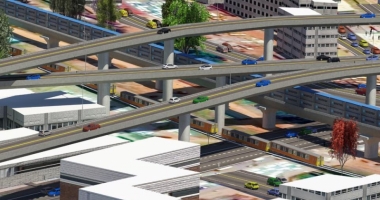
Design Reconciliation and Harmonization
a. Access Road: The intersection at Access Road between JICA flyover, the meter gauge railway and the standard gauge railway harmonized after discussions with all the stakeholders including KCCA, UNRA, etc. The flyover was elevated higher and the SGR will have a separate grade crossing.
b. SGR and Jinja Kampala Express Way (JKEW): To avoid a lot of intersections between the JKEW and the SGR that would require harmonizing the levels and angles of approach, the JKEW is being re-aligned to run along the SGR and UNRA has taken this positive initiative for the sake of harmonizing infrastructure along the corridor.
c. SGR and Electricity: The Project is working with UETCL to ensure that future constructions and designs are harmonized with the SGR.
d. SGR and DUCAR Roads: SGR is harmonizing with all the district authorities to provide access through the SGR since SGR will be elevated all the way from Malaba to Kampala.
Pic: Artistic impression of harmonized SGR, Kampala Fly Over & current Meter Gauge Railway at Access Road. Kampala Fly Over will be above SGR.
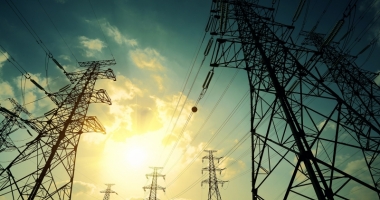
Relocation of utilities
The Project is working the NWSC, UMEME and other entities to relocate their utilities that traverse the SGR line. 17 conflict points with UETCL will require relocation of transmission lines, either by providing underground cables and/or shifting the lines.
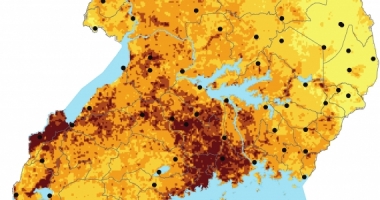
Earth Quake Hazard Assesment
As requested by the financier, the Project hired consultants to carry out an earthquake hazard assessment along Malaba-Kampala route which is necessary during the detailed engineering design of the system. This was done and reports submitted to financiers.
Mineralogy assessment study
The Project, together with the Ministry of Energy and Mineral Development, particularly the Directorate of Geological Survey and Mines (DGSM), carried out a mineralogy assessment study aimed at ensuring that the railway does not traverse areas with high mineral potential which may require future diversion of the railway.

Geo-hazard Assessment Study
The Project, together with the DGSM, carried out a geo-hazard assessment aimed at assuring the financier that the railway is not affected by mudslides, floods or geological catastrophes. The report is ready and approved.
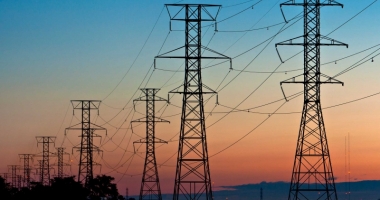
Electricity Extension
The Project, together with UETCL, has carried out survey and design that will assist in extension of electricity from UETCL 132kV lines to the railway traction substations. Approx. 60km with 132kV HEV will be extended to the planned 5 traction sub-stations of Tororo, Buwoola, Iganga, Nyenga and Namanve.
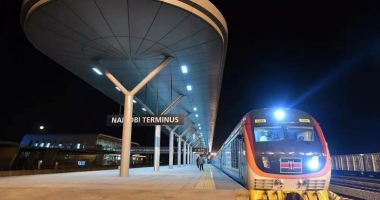
Operation and Maintenance
a. The Ministry/Project signed a MoU with CHEC to undertake operations in the interim as the country builds own capacity.
b. Government of Uganda (GoU) and Government of Kenya (GoK) signed a Communique for the use of one Operator on the Mombasa-Kampala SGR.
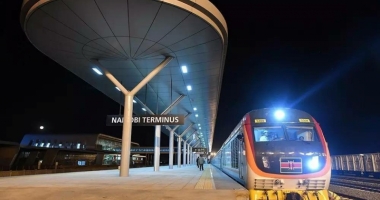
Operation and maintenance
a. The Ministry/Project signed a MoU with CHEC to undertake operations in the interim as the country builds own capacity.
b. Government of Uganda (GoU) and Government of Kenya (GoK) signed a Communique for the use of one Operator on the Mombasa-Kampala SGR.
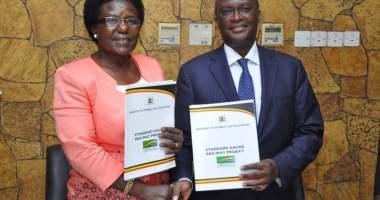
Connectivity between Uganda and Kenya
GoU and GoK signed a bilateral agreement about the connectivity at the border and locomotive flow between the two countries. The bridge over River Malaba will be built by GoK. GoU will extend electricity into Kenya to facilitate locomotive exchange at Malaba Station in Kenya. Rolling stock will move freely between Uganda and Kenya.
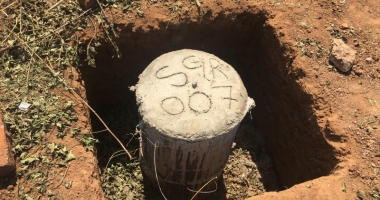
National Survey Controls
Due to the demands of the contractor to have national survey beacons that are less than 5 years old, the Project, together with the Department of Surveys and Mapping, is establishing national survey controls along Kampala-Malaba. There will be 27 beacons and planted either in schools or health centres.
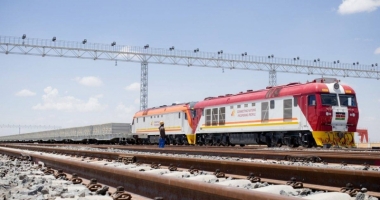
Operations Model
GoU and GoK agreed on an Operations Model which was later forwarded to the financier.
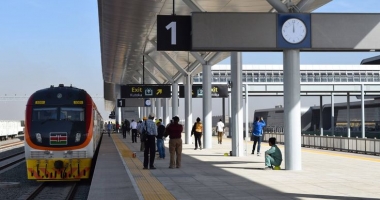
Policies to increase viability of SGR
Together with the Kenya Ministry of Transport, policies were identified that will increase the viability of the railway line. The policies were approved by the respective Ministers. These will be forwarded to Cabinet and Parliament during the process of loan approval.

Environmental Safeguards Strategy
Using in-house strategy, Environmental Safeguards Strategy has been prepared for the Malaba-Kampala section detailing procedures to ensure that all the environment laws and regulations are observed.
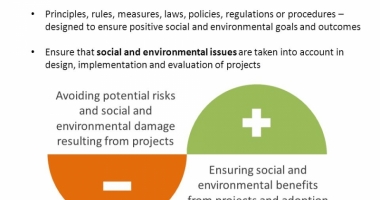
Social Safeguards strategy
Again using in-house approach, a Social Safeguard Strategy has been prepared and approved to ensure that the social, cultural, HIV/AIDS prevention and other norms are observed. It draws experience from the challenges we have had in the construction sector concerning social and cultural issues.
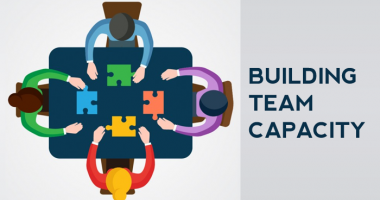
Capacity Building Strategy
This has been prepared using in-house approach, aimed at transfer of technology skills to the indigenous Ugandans, especially in the areas of design construction and O&M.

Occupational Safety and Health (OSH) Strategy
The OSH Strategy was prepared to ensure that construction regulations and guidelines are strictly followed.
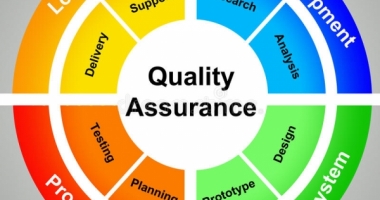
Quality Assurance Strategy
In order to ensure that the works done and services provided meet the standard as stipulated in the contract, a robust Quality Assurance Strategy has been prepared which includes the design review strategy, construction assurance strategy and the materials quality control strategy. A laboratory will be established and equipped to help the employer carry out the quality assurance function. This stringent mechanism is required to ensure that the railway system functions as designed and lasts for a period of 100 years.
Local Content Strategy
Using in-house capacity, the Project has prepared a Local Content Strategy which describes how the Project will ensure that at least 40% of the value of works is spent locally. The local content ratio will be 9:1 Ugandans to foreigners. The Project has discussed with cement manufacturers to produce the low alkaline, low sulphate good grade cement required for railway construction; it has discussed with steel manufacturers to produce the steel required for the railway concrete structures. Further discussions with UNABCEC are under way to ensure sub-contractors do take on some of the civil works. Discussions with PSFU and Ministry of Education are ongoing to ensure that at least a minimum of US$700m is spent locally.
To ensure that all the materials that come into the country meet the quality mark in compliance with the standard, the Ministry / Project have signed an MoU with UNBS. UNBS/Project will not only carry out pre-shipment inspections but also pre-production, in-production and post-production of the equipment, locomotives and rolling stock for SGR. UNBS will also improve their laboratories to test the construction materials that will be used on the Project as per agreed testing regime and standards. The Bureau will also recognize the Chinese Class 1 railway standards used by the Project as the official/legal standards for development of SGR.
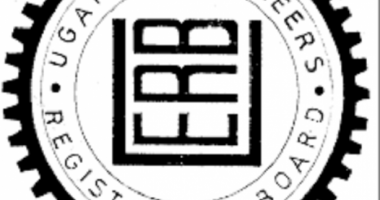
Engineers' Registration Board (ERB)
The Ministry/Project has signed an MoU with the ERB to regularize the qualifications of the engineers, technicians and technologists that will be coming to work on the Project. All will have to be certified by ERB.
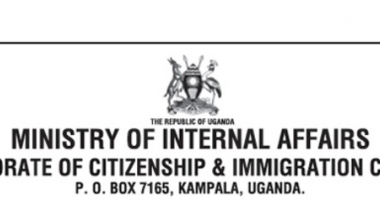
MoU with Ministry of Internal Affairs
The Ministry/Project signed an MoU with the Ministry of Internal Affairs such that all the foreigners into the country to work on the Project must seek a ‘no-objection’ from the Project. This will ensure that the personnel entering the country are those strictly required for SGR construction and in compliance with the local content approved guidelines.

Employer's Requirements
These Employer’s Requirements emphasized functionality requirements of the railway system including speed, durability, major geometrical parameters and the standards. These standards were in compliance with China Class 1 railway standards.
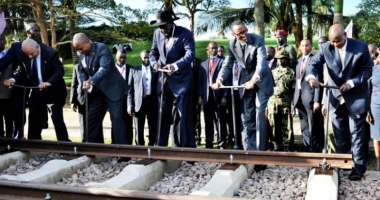
Northern Corridor Integration Projects (NCIP) Framework and SGR Protocol
This protocol provides for the four Partner States to follow the same standards and specifications which will allow the development of a seamless railway transport system across the region. It also emphasizes the use of Chinese Class 1 railway standards.

Feasibility Study and Engineering Design by Gauff Consultants
This was to get Ministry of Works and Transport (MoWT) the engineering design, economic and financial parameters that would be a basis for engaging the contractor and the consultants

Procurement of Contractor
A FIDIC EPC/TURNKEY contract has been signed between the Government of Uganda (represented by the Ministry of Works and Transport) and M/s Yapı Merkezi İnşaat ve Sanayi A.Ş., Türkiye in a Joint Venture with M/s YM Global Projects Limited.
CONNECT WITH US
Standard Gauge Railway Uganda
Developing the Tororo-Kampala (Eastern) and Tororo -Amuru-Packwach (Northern) routes

